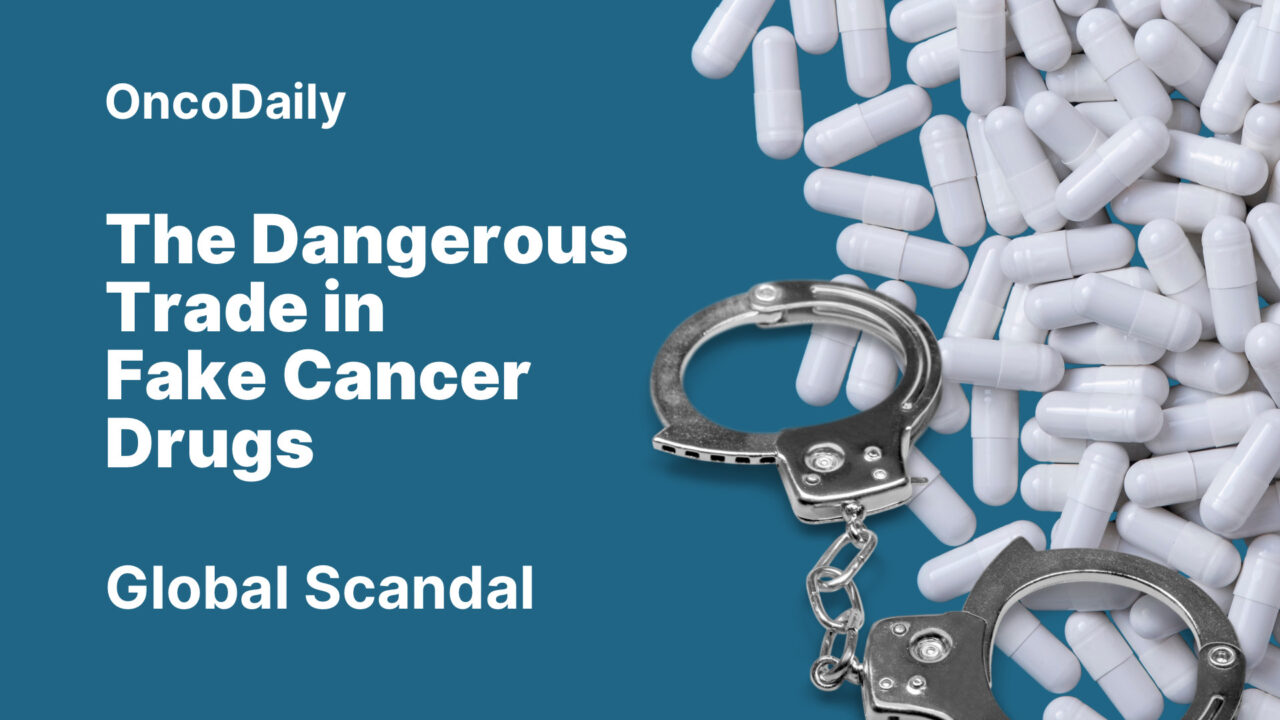
Global Scandal: The Dangerous Trade in Fake Cancer Drugs
The global trade in fake cancer drugs has reached alarming proportions, with substandard and counterfeit medications infiltrating supply chains in more than 100 countries. Recent investigations, including a major report by the Bureau of Investigative Journalism, reveal that vital chemotherapy drugs—used to treat common cancers such as breast, ovarian, and leukemia—often fail quality tests, leaving patients at risk of ineffective treatment or dangerous side effects. In some cases, pills contain so little active ingredient that they are essentially useless; in others, excessive amounts pose severe health hazards. This crisis exposes critical weaknesses in global regulatory systems and supply chains, disproportionately affecting low- and middle-income countries where cancer incidence is rising rapidly.
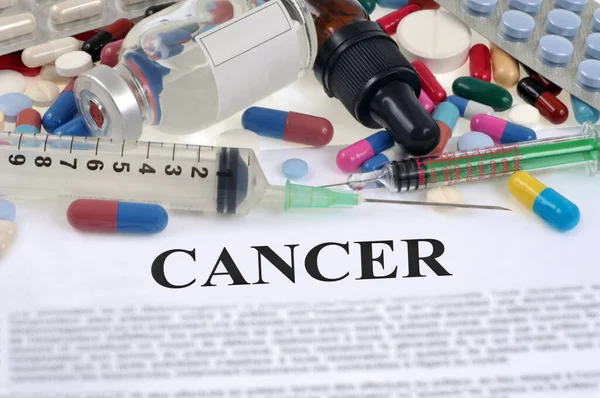
Photo:Depositphotos
This article aims to provide a fact-based, in-depth examination of the mechanisms behind the international distribution of fake cancer drugs, the devastating impact on patients and healthcare systems, and the ongoing efforts to detect and prevent this growing threat. By focusing on verified data and expert insights, we seek to illuminate the scale of the problem and explore practical solutions to safeguard cancer patients worldwide.
The Scope of the Problem: Counterfeit and Substandard Cancer Drugs Worldwide
Counterfeit and substandard cancer medications represent a growing global health crisis, affecting patients in more than 100 countries across all continents. According to a 2025 investigation by the Bureau of Investigative Journalism, vital chemotherapy drugs used to treat cancers such as breast, ovarian, and leukemia have repeatedly failed quality tests worldwide, leaving millions of patients at risk of ineffective treatment or severe side effects.
A recent multi-country study in Africa revealed that nearly 20% of cancer drugs tested in Ethiopia, Kenya, Malawi, and Cameroon were defective, containing incorrect levels of active ingredients. This alarming figure reflects a broader trend documented by the World Health Organization (WHO), which estimates that at least 1 in 10 medicines in low- and middle-income countries are substandard or falsified, with cancer drugs being prime targets due to their high cost and demand. World Health Organisation.
Among the most commonly counterfeited cancer drugs are chemotherapy agents such as IMFINZI (used for bladder, lung, and biliary tract cancers), as well as widely used treatments for breast and ovarian cancers. These fake medications often contain either no active ingredient or dangerously inconsistent doses, ranging from ineffective to toxic levels, which can lead to tumor progression, treatment resistance, or life-threatening toxicity.
The problem is exacerbated by complex and poorly regulated supply chains, especially in low-resource settings, where limited access to affordable authentic medicines drives patients and healthcare providers toward unregulated sources, including illicit online pharmacies. This widespread infiltration of counterfeit cancer drugs undermines global cancer control efforts, disproportionately impacting vulnerable populations in low- and middle-income countries where cancer incidence is rising rapidly.
In summary, counterfeit and substandard cancer drugs pose a critical threat to patient safety and treatment efficacy worldwide, with hundreds of millions of doses circulating through legal and illegal channels, demanding urgent international attention and coordinated action.
How Fake Cancer Drugs Enter the Global Supply Chain
Counterfeit cancer drugs are often produced in clandestine laboratories and unregulated factories located primarily in regions such as Asia (notably China and India), but also in some developed countries where illicit manufacturing occurs on a smaller scale. These makeshift labs operate with minimal oversight, using unsafe and unhygienic conditions. Criminal operators mix raw materials—sometimes stolen or illegally sourced—with harmful substances or incorrect doses of active ingredients.
The production process prioritizes profit over patient safety, resulting in medications that are either ineffective or toxic. Europol reports that these labs require relatively low investment in equipment and personnel, making them difficult to detect and shut down. The environmental impact is also severe, as toxic waste from these operations contaminates air, soil, and water.WHO Global Surveillance and Monitoring System for Substandard System
Distribution Channels
Once produced, fake cancer drugs enter global markets through complex and often covert distribution networks. These include:
- Smuggling routes via sea, air, road, and rail, often passing through multiple countries to obscure origin and evade detection. For example, counterfeit medicines frequently transit through hubs like Dubai to conceal their source.
- Online pharmacies and illicit e-commerce platforms provide easy access to counterfeit drugs, especially in regions with limited regulatory oversight. These platforms often advertise fake cancer drugs at lower prices, attracting vulnerable patients.
- Corrupt intermediaries and wholesalers who knowingly or unknowingly distribute counterfeit products to hospitals, clinics, and pharmacies. Investigations have revealed cases where unauthorized wholesalers supplied fake HIV and cancer drugs to legitimate pharmacies in the U.S. and other countries.
- Repackaging and tampering operations in small warehouses, particularly in regions like West Africa, where counterfeit drugs are repackaged with falsified expiry dates or branding before entering the market.
Vulnerabilities in Procurement and Supply Chains
Several weaknesses in global drug procurement and supply chains allow counterfeit cancer drugs to infiltrate legitimate healthcare systems:
- Fragmented and opaque supply chains with multiple intermediaries increase the risk of counterfeit products mixing with genuine ones.
- Limited regulatory capacity in low- and middle-income countries reduces the ability to inspect, test, and verify drug authenticity effectively.
- Lack of real-time global surveillance and communication systems delays the detection and recall of fake drugs once identified.
- Inadequate verification tools at the point of sale, with many pharmacies lacking access to technologies like serialization or blockchain tracking that can authenticate medicines.
- High demand and cost of cancer drugs push patients and providers toward cheaper, unregulated sources, especially where access to affordable, quality medicines is limited.
- Corruption and weak enforcement allow criminal networks to operate with impunity, exploiting loopholes in customs, regulatory agencies, and healthcare procurement.
Together, these factors create a fertile environment for counterfeit cancer drugs to circulate globally, endangering patient safety and undermining cancer treatment outcomes worldwide.
The Human Cost of Fake Cancer Drugs
The infiltration of counterfeit and substandard cancer drugs into healthcare systems worldwide has had devastating consequences for patients, families, and healthcare providers. Real-world cases documented by health authorities and researchers reveal the profound physical, psychological, and emotional toll these fake medications impose.
Patient Stories and Case Studies
One notable case involved a 61-year-old woman with recurrent breast cancer in the United States who received counterfeit erythropoietin, a drug used to treat anemia associated with cancer therapy. The counterfeit vials contained significantly less active ingredient than labeled, leading to a loss of efficacy. Her hemoglobin levels dropped dangerously low, and her cancer progressed more aggressively, ultimately contributing to her death. This tragic outcome underscores how fake drugs can directly worsen disease prognosis and reduce survival chances. Zaina P Qureshi J Oncol Pract. 2011
Another example is the distribution of counterfeit Avastin (bevacizumab), a critical chemotherapy drug used for colon, lung, and kidney cancers. In 2012, fake Avastin lacking any active cancer-fighting ingredient was found in multiple U.S. clinics, exposing patients to ineffective treatment and false hope. Patients like Diane Barraza, who relied on Avastin for stage IV colon cancer, expressed outrage and despair upon learning they had been administered counterfeit drugs. Erwin A Blackstone Am Health Drug Benefits. 2014
Oncologists’ and Healthcare Workers’ Perspectives
Medical professionals have witnessed firsthand the consequences of counterfeit cancer drugs. Oncologists report cases of undetected disease progression, where tumors continue to grow despite treatment, due to ineffective or inert counterfeit medications. Unexpected adverse effects and toxicities have also been observed, complicating patient management and leading to hospitalizations.
Healthcare workers emphasize the difficulty in detecting counterfeit drugs before administration, especially when packaging closely mimics authentic products. The psychological burden on clinicians is significant, as they grapple with the ethical and emotional impact of unknowingly providing patients with harmful or useless medications.
Psychological and Physical Toll on Patients and Families
Beyond the direct physical harm, receiving counterfeit cancer drugs causes profound psychological distress. Patients endure the trauma of ineffective treatment, often facing worsening symptoms, disease progression, and reduced survival odds. The uncertainty and betrayal felt when discovering their medication was fake can lead to anxiety, depression, and loss of trust in healthcare systems.
Families suffer alongside patients, coping with the emotional strain of watching loved ones decline due to ineffective therapy. Financial burdens also mount, as patients may pay high prices for counterfeit drugs or require additional treatments to manage complications caused by fake medications.
The Role of Organized Crime and Corruption in Fake Cancer Drug Trade
The production and trafficking of counterfeit cancer medications are deeply embedded in the operations of transnational organized crime groups. According to the United Nations Office on Drugs and Crime (UNODC), the counterfeit pharmaceutical trade is a multibillion-dollar illicit business, with criminal networks such as the Mafia, Camorra, and Asian triads heavily involved in manufacturing and distribution. These groups exploit the high demand and profitability of cancer drugs, often producing fake medicines in clandestine labs with minimal resources but high returns. The illicit trade is intertwined with other serious crimes, including drug trafficking, money laundering, and corruption, enabling these organizations to operate with relative impunity.
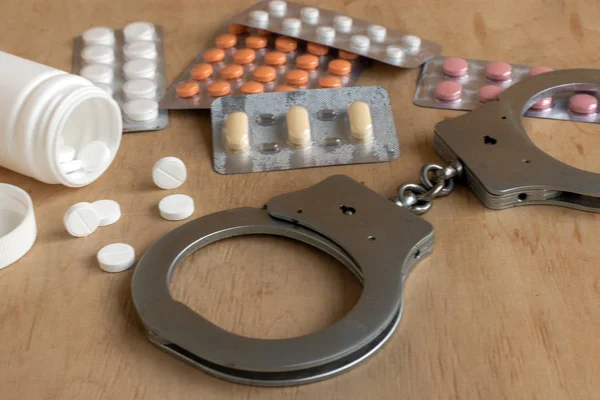
Photo:Depositphotos
Manufacturing and Distribution Tactics
Criminal actors manufacture counterfeit cancer drugs in poorly regulated or illegal facilities, primarily in Asia—especially China and India—which remain the main source regions for raw materials and finished products. These products often transit through free trade zones and transit hubs like Dubai, Singapore, and Hong Kong to obscure their origins. Distribution channels include smuggling via sea, air, and land routes, illicit online pharmacies, and corrupt intermediaries who infiltrate legitimate supply chains. Europol reports that small-scale clandestine labs in Europe also contribute to the problem, producing counterfeit pharmaceuticals under unhygienic conditions.
Corruption and Collusion within Supply Chains and Regulatory Bodies
Corruption plays a critical role in facilitating the counterfeit drug trade. Weak governance, bribery, and collusion allow counterfeiters to bypass inspections and regulatory controls. In some cases, corrupt officials within customs, regulatory agencies, or healthcare procurement systems enable the entry and distribution of fake medicines. Counterfeit Medicines and Organised Crime UN.
Organized crime groups use complex networks of shell companies and intermediaries to integrate counterfeit drugs into legal supply chains, making detection difficult. The lack of stringent enforcement and limited penalties for counterfeit drug offenses further embolden these criminal enterprises. National Crime Prevention Council.
Law Enforcement Data and International Watchdogs
Law enforcement agencies worldwide have documented the scale and sophistication of counterfeit cancer drug trafficking. For example, a major international operation led to the seizure of over 34 million illegal pills, including anti-cancer medications, within two months. The OECD estimates that the international trade in counterfeit pharmaceuticals reached USD 4.4 billion in 2016, with cancer drugs among the most frequently counterfeited. The U.S. Department of Justice has prosecuted cases involving individuals charged with conspiracy and trafficking of counterfeit cancer drugs, underscoring the ongoing legal efforts to combat this threat.
Scientific and Clinical Impact of Fake and Substandard Cancer Drugs
Counterfeit and substandard cancer drugs pose a serious threat to treatment outcomes, leading to ineffective therapy, increased drug resistance, cancer recurrence, and decreased survival rates. Scientific studies and clinical reports document the multiple ways these fake medications undermine cancer care and jeopardize patient safety.
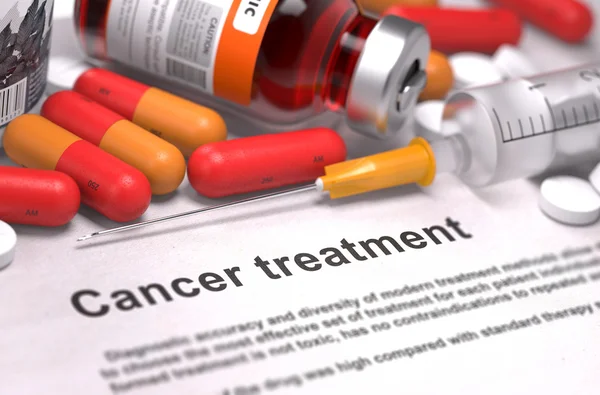
Photo:Depositphotos
Effects on Cancer Treatment Outcomes: Loss of Efficacy and Disease Progression
Patients receiving counterfeit cancer drugs often experience treatment failure because these medications may contain no active ingredient or insufficient doses. For example, a 61-year-old breast cancer patient documented in clinical literature experienced disease progression after receiving counterfeit erythropoietin, a drug used to manage anemia during cancer therapy. Similarly, counterfeit versions of bevacizumab (Avastin) have been found to contain inert substances like salt and starch, rendering treatment ineffective and allowing tumors to grow unchecked. Erwin A Blackstone Am Health Drug Benefits. 2014
Drug Resistance and Recurrence
Subtherapeutic doses in fake drugs can promote chemotherapy resistance, making cancer cells less responsive to subsequent treatments and increasing the risk of recurrence. This complicates clinical management and worsens prognosis.
Toxicity and Adverse Effects
Some counterfeit drugs contain harmful contaminants or incorrect dosages, causing severe side effects. Cases have been reported where bacterially contaminated counterfeit erythropoietin caused infections in cancer patients. Overdoses or toxic ingredients in fake drugs can lead to hospitalization or even death.
Psychological and Economic Burden
Patients face emotional distress from ineffective treatment and toxicities, alongside financial hardship due to wasted expenses on counterfeit medications and additional medical care.
Prevalence and Scientific Findings
The U.S. Food and Drug Administration (FDA) has reported multiple incidents of counterfeit Avastin entering the U.S. market through unauthorized suppliers, highlighting vulnerabilities even in well-regulated healthcare systems.
- Studies in sub-Saharan Africa found that approximately 20% of chemotherapy drugs tested were substandard or counterfeit, with many containing less than half the labeled active ingredient.
- The Bureau of Investigative Journalism revealed that poor-quality cancer drugs have been shipped to over 100 countries worldwide, affecting both high- and low-income nations.
- Scientific literature emphasizes the difficulty in detecting counterfeit oncology drugs because they often closely mimic authentic products in packaging and appearance, requiring specialized testing for identification.
International Response and Solutions to the Fake Cancer Drug Crisis
World Health Organization (WHO)
The WHO has established the Global Surveillance and Monitoring System (GSMS) to detect and respond to substandard and falsified medical products, including cancer drugs. The system collects reports from member states and issues rapid alerts to prevent the distribution of dangerous medicines. For example, WHO’s quick intervention in a case involving contaminated cough syrups averted hospitalizations across multiple continents, demonstrating the importance of global coordination in supply chain monitoring.
Interpol
Since 2008, Interpol’s Operation Pangea has targeted the illegal online sale and distribution of counterfeit medicines worldwide. By 2018, Operation Pangea XI spanned 116 countries and resulted in the seizure of over 500 metric tons of fake pharmaceuticals, shutting down thousands of illicit websites and making thousands of arrests. This operation continues annually, focusing on educating consumers and disrupting criminal networks trafficking counterfeit cancer drugs and other medicines.
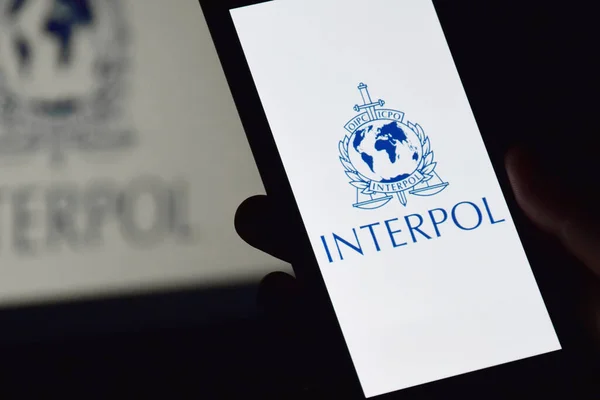
Photo:Depositphotos
U.S. Food and Drug Administration (FDA)
The FDA actively monitors and investigates counterfeit drug reports, issuing consumer warnings and coordinating recalls. It operates the Office of Criminal Investigations to pursue counterfeiters and works closely with international partners to secure supply chains. The FDA also encourages reporting of suspicious medicines through its MedWatch program and has recently implemented new track-and-trace programs to improve drug supply transparency.
European Medicines Agency (EMA)
The EMA collaborates with national regulatory authorities across Europe to strengthen pharmacovigilance and supply chain security. It has rolled out serialization and traceability requirements under the EU Falsified Medicines Directive, mandating unique identifiers on drug packaging to prevent counterfeit infiltration.
New Technologies and International Collaborations
Serialization and Track-and-Trace Systems:
Both the FDA and EMA have implemented serialization protocols requiring unique barcodes and digital tracking of medicine batches throughout the supply chain. This technology helps verify authenticity at each distribution point and enables swift recalls of suspect products.
Blockchain Tracking
Emerging blockchain technology offers a tamper-proof, decentralized ledger to record every transaction in the drug supply chain, enhancing transparency and traceability. While still in pilot phases, blockchain shows promise in preventing counterfeit cancer drugs from entering legitimate markets.
Global Databases and Alert Systems
WHO’s GSMS and Interpol’s intelligence-sharing platforms enable rapid dissemination of alerts about counterfeit drug batches, facilitating coordinated recalls and law enforcement actions across borders. Kalliroi S Ziavrouб Forensic Sci Int. 2022.
Successful Interventions and Reforms
In 2014, Chinese regulators found that 75% of foreign cancer medicines purchased online were counterfeit or ineffective. Since then, China has strengthened online pharmacy regulations and enhanced customs inspections, significantly reducing counterfeit drug circulation domestically. The EU’s comprehensive regulatory reform, including mandatory serialization and stricter import controls, has improved detection and prevention of counterfeit medicines entering the European market, protecting millions of patients. The FDA’s swift action to identify and remove counterfeit Avastin and other oncology drugs from the U.S. supply chain has prevented widespread patient exposure. Collaboration with healthcare providers and law enforcement has been key to these successes.
You Can Also Read How Much Does it Cost to Approve a Drug? EMA vs. FDA Regulations and Timelines by Oncodaily.
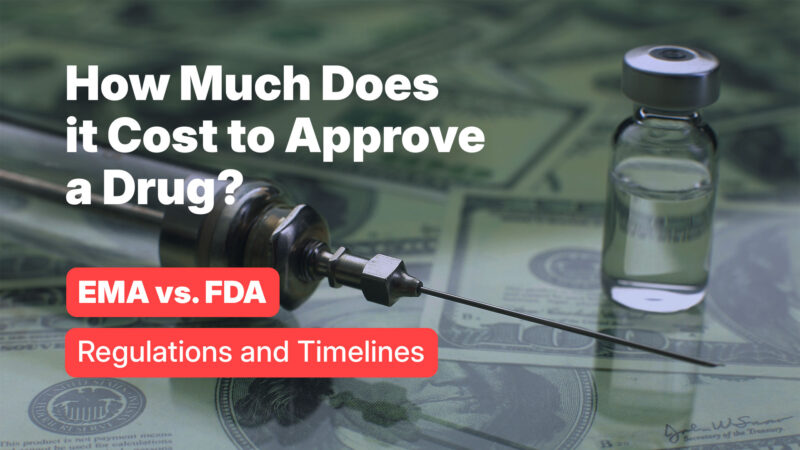
What Patients and Providers Can Do to Identify and Report Fake Cancer Drugs
When purchasing cancer medications, it is crucial to buy them from trusted sources such as licensed pharmacies or authorized healthcare providers. Avoid online pharmacies unless they are verified by official accreditation bodies like the National Association of Boards of Pharmacy (NABP) or the Alliance for Safe Online Pharmacies. Always check the packaging carefully for any signs of tampering or poor quality, such as misspellings, faded or altered labels, broken seals, or differences in the size, shape, color, or markings of pills compared to previous prescriptions.
Genuine medicines typically have consistent, high-quality packaging and clear labeling. Be cautious of unusually low prices, as counterfeiters often use low costs to attract patients. If a cancer drug is offered at a price significantly lower than usual, especially in large quantities, treat it with suspicion. It’s also important to observe the quality of the medication by inspecting pills for cracks, discoloration, unusual texture, or powder inside containers. Any changes from what you have previously received should prompt you to verify with your pharmacist or doctor. Lastly, listen to your body; if you experience unexpected side effects, worsening symptoms, or a lack of improvement, immediately inform your healthcare provider, as these could indicate counterfeit or substandard medication.
Practical Advice for Healthcare Professionals
Healthcare professionals should source medications only from authorized channels, developing a list of trusted suppliers and avoiding purchases from unknown or unauthorized distributors. Whenever possible, verify batch numbers and expiry dates with manufacturers to ensure authenticity. It’s important to inspect the physical characteristics of new drug shipments by comparing them with known authentic products, paying attention to any differences in tablet markings, color, size, and packaging quality.
If there are any concerns about the appearance or effects of medication, healthcare professionals should encourage patients to report these issues. Any suspicion of counterfeit drugs should be reported promptly to regulatory authorities through official channels. Additionally, educating patients about the risks of buying medicines from unverified online sources and how to recognize suspicious packaging or prices is crucial to preventing the use of substandard or counterfeit medications.
How Can Healthcare Professionals Report and Verify Counterfeit Medications?
- UK Medicines and Healthcare products Regulatory Agency (MHRA), [email protected], 24-hour Counterfeit Hotline: +44 207 084 2701, www.mhra.gov.uk
- U.S. Food and Drug Administration (FDA), MedWatch Reporting, www.fda.gov/medwatch, Report unsafe online pharmacies or counterfeit drugs to the FDA’s Office of Criminal Investigations, FDA’s BeSafeRx campaign provides information on safe online pharmacies.
- Alliance for Safe Online Pharmacies, www.safeonlineshopping.org, helps verify legitimate online pharmacies.
- Pharmaceutical Manufacturers: Contact the drug manufacturer directly to verify batch numbers or report suspicious products.
Written by Aharon Tsaturyan, MD.
FAQ
What are counterfeit cancer drugs?
Counterfeit cancer drugs are medications that are deliberately and fraudulently mislabeled with respect to identity or source. They may contain incorrect or no active ingredients, wrong doses, or harmful substances. These fake drugs fail to provide the intended therapeutic effect and can cause serious harm to patients.
How common are fake cancer medications worldwide?
Fake and substandard cancer drugs have infiltrated supply chains in more than 100 countries globally. Studies show that in some regions, such as parts of Africa, nearly 20% of cancer drugs tested were defective, containing incorrect levels of active ingredients. The World Health Organization estimates that about 10% of medicines in low- and middle-income countries are substandard or falsified, with cancer drugs being prime targets due to their high cost and demand.
How can I tell if my cancer medication is counterfeit?
Signs include packaging errors like misspellings, faded or altered labels, broken seals, or pills that differ in size, shape, or color from previous prescriptions. Unexpected side effects or lack of improvement during treatment may also indicate counterfeit drugs. However, counterfeit medicines often closely mimic authentic products, so verification by a pharmacist or healthcare provider is essential.
What are the risks of taking counterfeit or substandard cancer drugs?
Risks include ineffective treatment leading to tumor progression, development of drug resistance, severe toxic side effects, and even death. Fake drugs may contain no active ingredient or harmful contaminants. Patients may endure physical harm, psychological distress, and financial burdens due to treatment failure and complications.
How do fake cancer drugs enter the global supply chain?
They are often produced in clandestine labs and unregulated factories, mainly in Asia (China, India), and smuggled globally via complex routes including hubs like Dubai. Distribution channels include illicit online pharmacies, corrupt intermediaries, and repackaging operations. Weak regulatory oversight and fragmented supply chains facilitate their infiltration into legitimate healthcare systems.
Which cancer drugs are most commonly counterfeited?
Commonly counterfeited drugs include chemotherapy agents such as cyclophosphamide, IMFINZI (used for bladder, lung, and biliary tract cancers), and treatments for breast and ovarian cancers. For example, all tested samples of cyclophosphamide from a major Indian manufacturer failed quality tests, with some containing less than a quarter of the stated active ingredient.
What impact do counterfeit cancer drugs have on treatment outcomes?
Counterfeit drugs often lead to treatment failure, allowing tumors to grow or recur. Subtherapeutic doses promote drug resistance. Toxic counterfeit drugs cause adverse effects and hospitalizations. These outcomes reduce survival rates and undermine global cancer control efforts.
How do regulatory agencies like WHO, FDA, and EMA combat counterfeit cancer drugs?
How do regulatory agencies like WHO, FDA, and EMA combat counterfeit cancer drugs? WHO operates the Global Surveillance and Monitoring System (GSMS) to detect and alert member states about substandard and falsified medicines. Interpol conducts operations like Pangea to seize counterfeit drugs and shut down illicit online pharmacies. FDA investigates reports, issues recalls, and works internationally to secure supply chains. EMA enforces serialization and traceability under the EU Falsified Medicines Directive to prevent counterfeit infiltration.
What technologies are used to detect and prevent counterfeit medicines?
Serialization protocols assign unique barcodes to drug packages for tracking through the supply chain. Blockchain technology is emerging as a tamper-proof ledger for medicine transactions. Global databases and alert systems facilitate rapid communication about counterfeit drug batches.
Can buying cancer drugs online be dangerous? How to buy safely?
Yes. Studies show that 96% of online pharmacies selling prescription medicines in the US do not comply with legal standards. Many sell counterfeit drugs. Patients should only buy from verified online pharmacies accredited by bodies like the National Association of Boards of Pharmacy (NABP) or the Alliance for Safe Online Pharmacies.
What should patients do if they suspect their cancer medication is fake?
Patients should immediately notify their healthcare provider and pharmacist, stop using the medication if advised, and report the suspicion to regulatory authorities such as the FDA MedWatch program or local drug regulatory agencies.
How do healthcare professionals verify the authenticity of cancer drugs?
Professionals verify batch numbers and expiry dates with manufacturers, inspect packaging and physical characteristics, and use technologies like serialization scanners. They also report suspicious products to regulatory bodies for investigation.
What role does organized crime play in the counterfeit drug trade?
Organized crime groups, including Mafia and Asian triads, manufacture and distribute counterfeit cancer drugs globally. They exploit weak regulations and corruption to infiltrate supply chains, generating billions in illicit profits while endangering patients.
Are low- and middle-income countries more affected by fake cancer drugs? Why?
Yes. These countries often have weaker regulatory systems, limited access to affordable authentic medicines, and fragmented supply chains, making them more vulnerable to counterfeit drug infiltration. The rising cancer incidence in these regions exacerbates the problem.
What legal actions are taken against counterfeit cancer drug manufacturers and distributors?
Law enforcement agencies conduct seizures, arrests, and prosecutions globally. For example, international operations have seized millions of counterfeit pills. The U.S. Department of Justice has prosecuted conspiracies involving counterfeit cancer drugs.
-
Challenging the Status Quo in Colorectal Cancer 2024
December 6-8, 2024
-
ESMO 2024 Congress
September 13-17, 2024
-
ASCO Annual Meeting
May 30 - June 4, 2024
-
Yvonne Award 2024
May 31, 2024
-
OncoThon 2024, Online
Feb. 15, 2024
-
Global Summit on War & Cancer 2023, Online
Dec. 14-16, 2023
